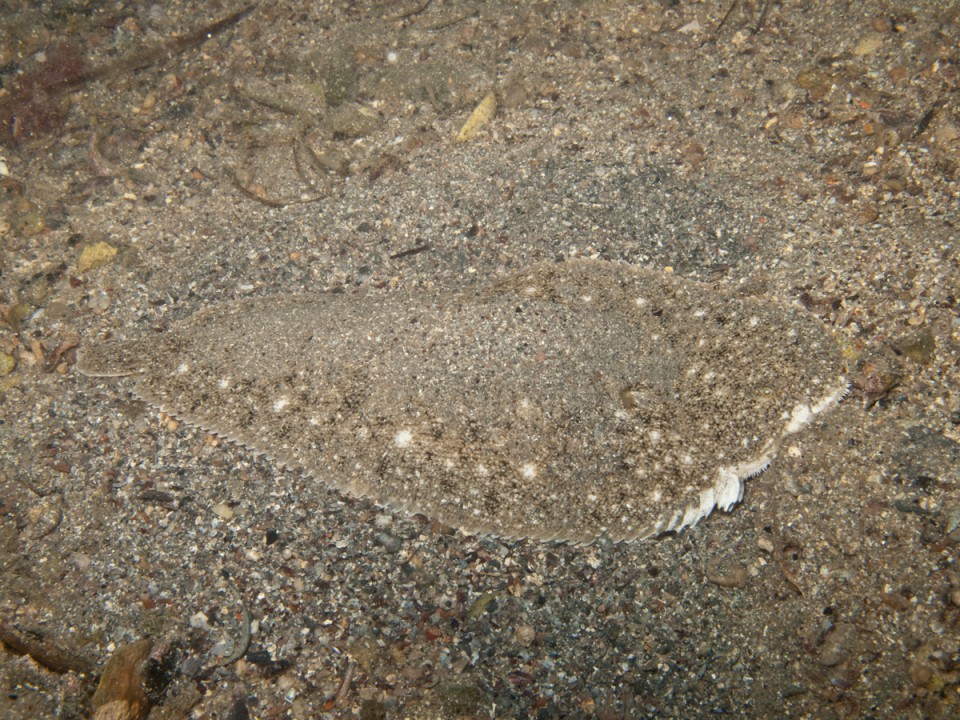Solea vulgaris
La sogliola è un pesce piatto dal corpo ovale e molto compresso. La testa è piccola ed il muso è arrotondato. La bocca, piccola ed arcuata, è situata in basso. Gli occhi, di cui uno “migra ” nel periodo della metamorfosi, sono situati nella parte visibile (superiore) del corpo. L ’animale è ricoperto di numerose squame rettangolari, piccole e spinose. Le pinne sono prive di raggi spinosi. La colorazione mimetica della parte superiore dell’animale varia dal bruno grigio uniforme al rossastro, con possibile presenza di piccole macchie più o meno evidenti e diffuse. L ’animale nella parte inferiore è biancastro. Gli individui mediterranei vivono fino a 20 anni. Secondo la FAO in Mediterraneo al genere Solea (dal latino “solea ” che significa sandalo) appartengono 7 specie mediterranee. Solea vulgaris (la sogliola) può essere confusa con la specie Solea impar e Solea lascaris (Sogliola dal porro). Queste possono essere facilmente distinte dalla prima per la presenza sul lato inferiore di una narice a forma di rosetta (porro)e non a forma tubulare. È una specie eurialina (si adatta a differenti salinità). Gli stadi larvali e giovanili infatti penetrano in ambienti salmastri (lagune e foci di fiumi), dove per lungo periodo stazionano prima di andare in mare. Si nutre, prevalentemente di notte, di invertebrati e piccoli pesci e raggiunge la maturità sessuale a 3-5 anni e si riproduce,alle nostre latitudini, da gennaio a maggio. Le uova,con diametro di 1-1. 5 mm, sono composte di numerose goccioline oleose giallo chiaro e galleggiano. È oggetto di pesca professionale con apposite reti da traino (rapidi, sfogliare o ramponi). È catturata anche con strascico ed attrezzi fissi (tramagli). Taglia minima 20 cm.

